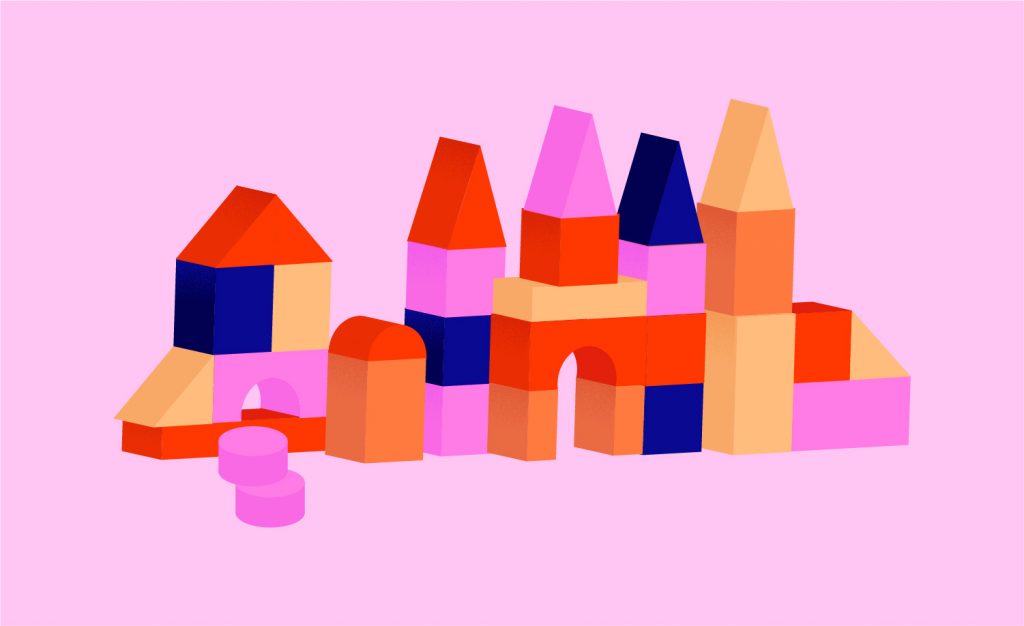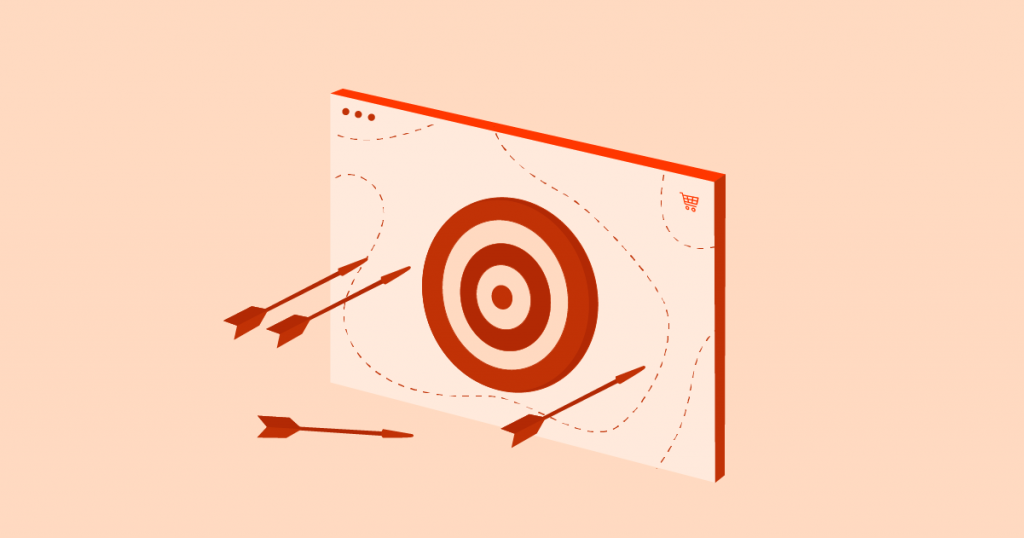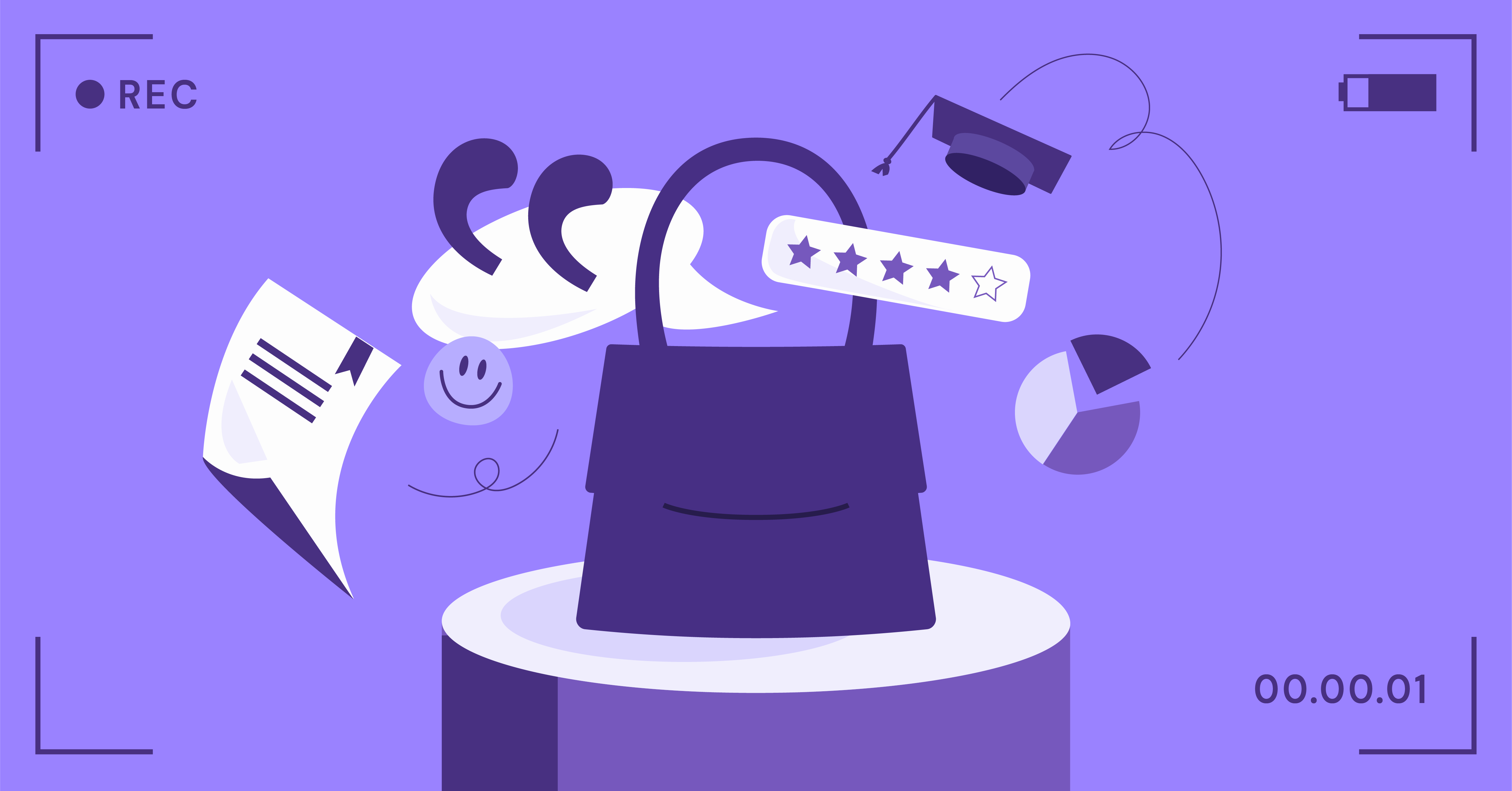Table of Contents
What is OOH Advertising?
Out-of-home (OOH) advertising is any ad that reaches people while they’re outside their homes. It’s the billboard you see on your way to work, the ad at the bus stop, or the digital screen showing ads in a busy mall. OOH puts messages in public spaces, making sure lots of people see them when they’re out and about.
Types of OOH Ads
OOH isn’t just billboards. It comes in many forms, each with its own strengths:
- Billboards: These big ads grab attention on highways and busy streets.
- Transit Ads: Buses, trains, and taxis carry ads to people on the move.
- Street Furniture: Bus shelters and benches show ads at eye level in cities.
- Place-Based OOH: Ads in specific spots like stadiums, malls, and gyms target people with shared interests.
- Digital Out-of-Home (DOOH): These digital displays show changing content and can be interactive.
Why Choose OOH?
In a world full of online ads, OOH offers a fresh way to connect with people. Here’s why it works:
- Reaches Many People: OOH can be seen by lots of different people in various places.
- Makes a Big Impact: The size and creativity of OOH ads make them hard to ignore and easy to remember.
- Fits the Setting: You can put OOH ads in places that match your target audience’s habits.
- Creates Experiences: New tech lets brands make OOH ads that people can interact with.
- Builds Brand Trust: OOH helps make your brand more recognizable and trusted.
How Digital Tech is Changing OOH
Digital technology is shaking up the world of Out-of-Home advertising, bringing in a wave of new ideas and exciting possibilities. Let’s take a look at some of the biggest changes happening.
Smart Buying with Programmatic DOOH
Programmatic Digital Out-of-Home (pDOOH) is changing how OOH ads are bought and shown. It lets advertisers buy ad space quickly based on specific triggers and audience data. For example, you could change your billboard’s message based on the weather or time of day.
Here are some of the benefits of pDOOH that you must know:
- Better Targeting: You can aim your ads at specific groups based on their traits and behaviors.
- Quick Changes: You can update your ads instantly to match current trends.
- Data-Driven Improvements: You can track how well your ads are doing and make them better.
- Cost-Effective: By showing ads to the right people at the right time, you spend money more wisely.
pDOOH is making OOH advertising available to more businesses and allowing for more creative, local ads.
Connecting OOH with Mobile
Smartphones have opened up new ways for OOH ads to reach people personally. By using location data from phones, advertisers can show OOH ads to people nearby. For instance, a coffee shop could show an ad to people walking close by.
Mobile tech also lets OOH ads be interactive. QR codes, NFC tags, and augmented reality can take viewers from a billboard to a website, contest, or brand experience on their phones.
Examples of Mobile and OOH Working Together
- A gym shows ads on digital billboards when people are nearby.
- A store has a cool idea: they put a QR code on a bus stop ad so you can quickly scan it with your phone and check out their deals.
- A movie ad uses augmented reality to let viewers see trailers by scanning with their phones.
Why Mix Mobile and OOH?
- More Engaging: People can interact with the ads, not just look at them.
- Measurable Results: You can keep an eye on the number of folks who check out your ad.
- Personal Touch: Ads can be tailored to fit what each person likes.
As mobile tech improves, we’ll see even more creative ways to combine the real world with digital advertising.
Data-Driven OOH: Targeting with Precision
The rise of technology has brought a flood of data to Out-of-Home (OOH) advertising. Today’s marketers can use this data to make their OOH campaigns more focused and effective.

Data-driven OOH uses information from several sources:
- Mobile Location Data: This shows where people go and how long they stay there. It helps put ads where they’ll have the biggest impact.
- Audience Information: Knowing your target audience’s age, interests, and lifestyle helps create better messages and placements.
- Real-Time Factors: Things like weather, traffic, or social media trends can change OOH content on the spot, making it more relevant.
Why Use Data in OOH?
Data-driven OOH takes the guesswork out of advertising. It helps marketers:
- Reach the Right People: Show your ads to those most likely to be interested in what you’re selling.
- Make Ads More Relevant: Fit your ads to specific places, times, and events to grab people’s attention.
- Improve Campaigns: Keep track of how well your ads are doing and make changes to get better results.
Real-World Examples
- A clothing store shows ads for new styles in trendy neighborhoods.
- A travel agency advertises beach trips on office building screens when it’s raining.
- A fast-food chain promotes drive-thrus when traffic is heavy.
Data-driven OOH is changing how we advertise outdoors. It helps create campaigns that work better and waste less money.
Planning Successful OOH Campaigns
A well-planned OOH (Out-of-Home) advertising campaign can significantly boost brand visibility and engagement. Let’s explore the key steps involved in crafting impactful OOH campaigns.
1. Set Clear Goals
Before you start your OOH campaign, you need to know what you want to achieve. Are you trying to increase awareness of your brand, attract more customers to your store, or launch a new product?
Setting clear goals will help you plan your campaign and measure its success. Try using SMART goals: Specific, Measurable, Achievable, Relevant, and Time-bound.
For example, instead of saying “increase brand awareness,” try: “Increase brand recall by 15% among our target audience within three months of the campaign launch.”
2. Measure Success
Once you have your goals, decide how you’ll track your progress. Here are some things you can measure:
- Impressions: How many people might see your ads?
- Reach: What percentage of your target audience sees your ads at least once?
- Frequency: How many times does your target audience see your ads on average?
- Brand Lift: How much more do people know or like your brand after seeing your ads?
- Store Visits: How many people visit your store after seeing your ads?
- Online Activity: How much more traffic does your website get, or how many more social media interactions do you have because of your OOH ads?
Choose measurements that match your campaign goals. Tracking these will help you see how well your OOH campaign is working and make smart changes.
3. Create Eye-Catching Ads
The success of your OOH campaign depends a lot on how your ads look. With so many things to see outside, your ads need to stand out. Here are some tips:
- Keep It Simple: People often see OOH ads quickly, so make your message short and easy to understand.
- Make It Pop: Use bold colors, striking images, and clear text to grab attention. Think about how far away people will be when they see your ad.
- Fit the Surroundings: Adjust your ad to fit where it’s placed and who will see it. An ad in a busy city center might look different from one in a quiet suburb.
- Tell People What to Do: Make sure to give people a clear idea of what to do next, like heading to a website or making a purchase.
- Be Creative: Try new things! Interactive elements or clever use of technology can make your ad stand out.
Examples of Great OOH Ads
- McDonald’s “Follow the Arches”: This campaign used simple direction signs with just the golden arches to guide drivers to McDonald’s.
- Spotify’s “Wrapped”: Spotify showed people’s listening habits on billboards, which got people talking and sharing on social media.
- British Airways “Look Up”: Digital billboards tracked planes flying overhead and showed flight information, inspiring people to travel.
Remember, your OOH ad is the face of your campaign. Take time to create visuals that grab attention and stay in people’s minds.
Choose the Right Spots for Your Ads
Where you put your OOH ads is just as important as what they look like. Here’s what to think about when picking locations:
- Where Your Audience Goes: Put your ads where your target audience spends time. Use data to find popular spots and routes.
- Easy to See: Choose places where your ads won’t be blocked and can be seen clearly, even from far away.
- Fits Your Message: The area around your ad can make it more effective. For example, a health food brand might advertise near gyms or parks.
- Stand out from Competitors: Look for places where there are few other ads so yours can shine.
- Fits Your Budget: Different spots cost different amounts. Choose places that give you the best value for your money.
- Tech-Ready: If you’re using digital ads, make sure the locations can support your goals.
- Follow the Rules: Check local laws about outdoor ads, like size limits or content rules.
After your campaign starts, track each location’s performance. This will help you choose better spots in the future.
Using data about where people go and who they are can help you pick the best spots for your ads. This information will help you make smart choices and get the best results from your OOH campaign.
Measuring and Improving Your OOH Campaigns
OOH advertising isn’t just about creative designs. It’s also about tracking how well your ads work. In 2025, we have many tools to help you see how your OOH campaigns are doing and improve them.
Old-School Measurement Methods
Even with new tech, some old ways of measuring still work well:
- Traffic and Foot Traffic Counts: Look at how many people pass by your ads. This tells you how many might see them.
- Surveys and Interviews: Ask people if they remember your ads and what they think about them. This will give you valuable insights.
- Sales Increase Analysis: Check if your sales go up when your OOH ads are running. This can show if the ads are working.
New Digital Ways to Measure
Digital OOH and smart buying methods have brought new ways to measure:
- Views and Visibility: Digital screens can count how many times your ad shows up and guess how likely people are to see it.
- Engagement Tracking: If your ad contains QR codes or AR experiences, you can see how many people use them.
- Conversion Tracking: By connecting OOH with online platforms, you can see how many people go from seeing your ad to visiting your website or buying something.
Making Your Campaigns Better
Data is only useful if you use it to improve. Look at how your campaign is doing often and make changes based on what you learn:
- Ad Design: Try different pictures, messages, and calls to action to see what works best with your audience.
- Ad Placement: Find spots that aren’t working well and move your ads to better places.
- Timing: Test different times of day to see when your ads work best.
- Audience Targeting: Use what you learn about who sees your ads to make sure you’re reaching the right people.
By using data to measure and improve your OOH campaigns, you can ensure that your ads look good and generate real results for your business.
Mixing OOH with Your Online Strategy
OOH ads are great for getting attention in the real world. But they work even better when you connect them with your online marketing. This creates a complete brand experience that guides people from the street to your website, getting them more involved and more likely to buy.

Here are some ways to mix OOH with your online strategy:
1. Easy Connections with QR Codes
Put QR codes on your OOH ads. When people scan them, they can go straight to your website, join a social media contest, or receive a special offer. This will get people to act immediately.
2. Use Social Media
Add hashtags or ask for shares in your OOH ads. This turns your ads into topics people want to talk about online, spreading your message further. When people share your ads online, it’s great proof that people like your brand.
3. Follow Up Online
Use mobile location data to show online ads to people who’ve seen your OOH ads. This reminds them about your brand and can lead to more sales.
4. Mobile Ads Near Your OOH Ads
Show mobile ads to people near your OOH ads. This keeps your message in people’s minds as they go about their day.
5. Learn from Your Data
Use information from both your OOH and online campaigns to understand how people behave and what they like. This can help you plan future marketing and improve all your ads.
6. Create a Consistent Experience
Make sure your message and look are the same in your OOH and online ads. This will give people a smooth experience as they interact with your brand in different places.
By smartly combining OOH and online marketing, you can reach more people, get them more involved, and make more sales. It’s not about choosing one or the other but about using both together to create a complete and effective marketing plan.
Building a Website for Your OOH Campaign with Elementor
Remember, a well-crafted website can significantly amplify the impact of your Out-of-Home (OOH) advertising campaign. Let’s explore why having a dedicated website for your OOH campaign is essential.

Why You Need a Website for Your OOH Campaign
These days, an OOH campaign isn’t just about the ads you see outside. It’s about creating a complete brand experience that extends online. A website for your campaign can:
- Show Off Your Ads: Display high-quality images and videos of your OOH ads so people can see them again and share them online.
- Give More Information: Explain your campaign message in more detail, share behind-the-scenes content, or give more info about your products or services.
- Get People Involved: Include interactive elements, contests, or special offers to encourage more interaction and get leads.
- Track Results: Use analytics tools to see how many people visit your website and what they do there. This will give you valuable insights into how your campaign is performing.
A website acts like an online extension of your OOH campaign, extending its reach and impact. It gives you a place to connect with your audience more deeply, building brand loyalty and achieving measurable results.
Elementor: An Easy Way to Build Your Website
Creating a great website for your OOH campaign doesn’t have to be hard. With Elementor, a super easy website builder, you can make websites that look like a pro did them, even if you don’t know code from a hole in the ground. Building a website is as easy as drag and drop. There are also many templates and widgets to choose from, so you can easily make a website that matches your brand and campaign goals.
Key Features of Elementor:
Elementor is packed with features that simplify website creation and empower creativity. Let’s explore some of its standout features.
- Drag-and-Drop Editor: Easily add and arrange elements on your pages without coding.
- Template Library: Choose from hundreds of pre-designed templates to start your website quickly.
- Widgets & Add-ons: Spice up your website with a bunch of cool tools to make it more fun and interactive.
- Mobile-Friendly: Make sure your website looks good on all devices, from computers to smartphones.
- SEO Tools: Built-in features help your website show up in search engine results.
How to Build Your OOH Campaign Website
Let’s go through the steps to create your website using Elementor:
- Start with a Template:
- Choose a template from Elementor’s library that fits your campaign’s style.
- Customize your homepage with eye-catching images of your OOH ads, a clear message, and buttons for people to click.
- Show Off Your Ads:
- Create a gallery to display high-quality images of your OOH ads.
- Add videos related to your campaign to make the site more dynamic.
- Tell Your Story:
- Write compelling text that expands on your OOH message, giving more context and information.
- Share behind-the-scenes content about how you made your campaign.
- Include social media posts or testimonials to show how people are reacting to your campaign.
- Get People Involved:
- Add interactive elements like polls or contests to encourage participation.
- Create forms for people to sign up for newsletters or request more information.
- If you’re selling products, integrate your online store into the website.
- Track and Improve:
- Hook up your website to Google Analytics and get the inside scoop on how visitors are interacting with it.
- Use tools like Hotjar to see where people click and test different versions of your website to improve its performance.
Using AI to Help
Elementor is packed with features that simplify website creation and empower creativity. Let’s explore some of its standout features.
Elementor also has some AI features that can make building your website easier:
- AI Copilot: This tool suggests designs, layouts, and even content ideas based on what you like.
- Text & Image Generation: Create catchy headlines, body text, and even unique images using AI-powered tools.
Remember, your OOH campaign website is more than just an online brochure. It’s like a magic wand that helps you chat with your audience, share your ideas, and make things happen. With Elementor’s easy-to-use tools, you can create a website that looks great and works effectively, helping your OOH campaign reach its full potential.
The Future of OOH: What’s Coming Next
OOH ads are getting a tech makeover. This new tech is changing how brands talk to people, making ads more personal and exciting.
Here’s what’s new:
- Augmented Reality (AR): AR adds digital stuff to the real world. Imagine billboards that come to life or bus stops that turn into virtual worlds.
- Virtual Reality (VR): VR is still new, but it could take people to whole new worlds. Picture stepping into a virtual store from a billboard or taking a virtual test drive at a bus stop.
- 5G: This super-fast internet lets digital OOH screens change content quickly, making ads more up-to-date and personal.
- Internet of Things (IoT): This connects everyday objects to the internet. In OOH, it could mean ads that change based on the weather or traffic.
- Artificial Intelligence (AI): AI is already helping buy ad space and find the right audience. In the future, it might help make better campaigns and even create ad content.
As these new techs get better and cheaper, we’ll see lots of new and creative OOH ads.
Going Green in OOH
More people care about the environment now. OOH ads are trying to be more eco-friendly, too.
Here’s how OOH is going green:
- Using Less Energy:
- LED lights use less power than old lights.
- Some billboards use solar power.
- Smart systems turn off lights when not needed.
- Eco-Friendly Materials:
- Using recycled stuff for billboards and bus ads.
- Some ads use plant-based inks and special paper that breaks down naturally.
- Making less waste in the ad-making process.
- Other Green Things:
- Some OOH companies plant trees to make up for their carbon use.
- Working with local groups to teach people about the environment.
Being green isn’t just good for Earth. It’s good for business too. People like brands that care about the environment. Eco-friendly billboards can seriously boost your brand’s image and reel in customers who care about the environment.
Green OOH Groups:
- The World Out of Home Organization (WOO) is making rules for green OOH ads.
- The Sustainable Advertising Coalition helps all kinds of ads, including OOH, be more green.
- Many OOH companies are setting goals to be more eco-friendly.
OOH After COVID-19
COVID-19 changed how we live and how we see ads. OOH ads, which used to be all about busy cities, had to change when people stayed home. But now, as people go out again, OOH ads are coming back strong.
What’s Different Now:
- People Want to Be Outside: After being stuck inside, people are excited to be out. They’re more likely to notice and enjoy OOH ads.
- New Ways of Doing Things:
- Ads now often talk about health and safety.
- OOH campaigns need to be ready to change quickly if rules change.
- Many ads focus on helping local communities.
- New Chances for Brands:
- OOH ads can help remind people about brands they might have forgotten.
- As people start going out and buying things again, they’re more open to ads.
- Using data to make sure ads reach the right people at the right time.
Even though COVID-19 was hard on OOH ads, it also pushed the industry to improve. OOH ads now use more tech and data to make better campaigns. In this new world, OOH ads are a great way for brands to connect with people and grow their business.
Wrapping It Up
Main Points to Remember:
- OOH ads are doing well, even as more things go online.
- We looked at different types of OOH ads and why they work.
- New tech, like programmatic buying and mobile integration, is making OOH ads better.
- We talked about how to plan and make good OOH campaigns.
- The future of OOH looks exciting, with new tech and a focus on being green.
Why OOH Matters in 2025: In a world where it’s hard to get people’s attention, OOH ads stand out. They can make a big impact. Whether you’ve done OOH ads before or you’re new to it, now is a great time to try it out.
As you start using OOH ads, remember that creativity, data, and tech can help a lot. Use these tools well, and you can make ads that not only get noticed but also help your business grow.
Originally posted 2023-01-13 10:26:00.
Looking for fresh content?
By entering your email, you agree to receive Elementor emails, including marketing emails,
and agree to our Terms & Conditions and Privacy Policy.






